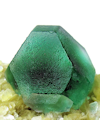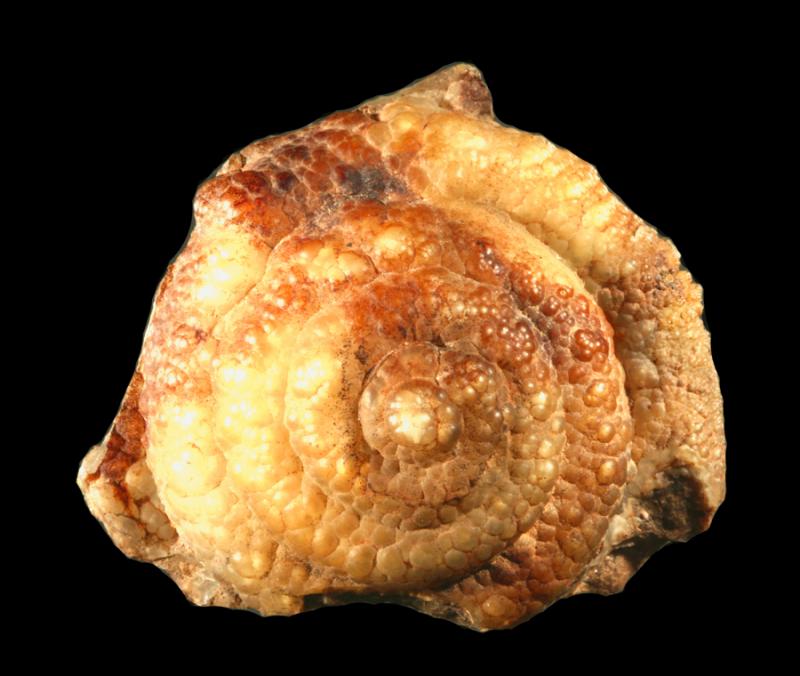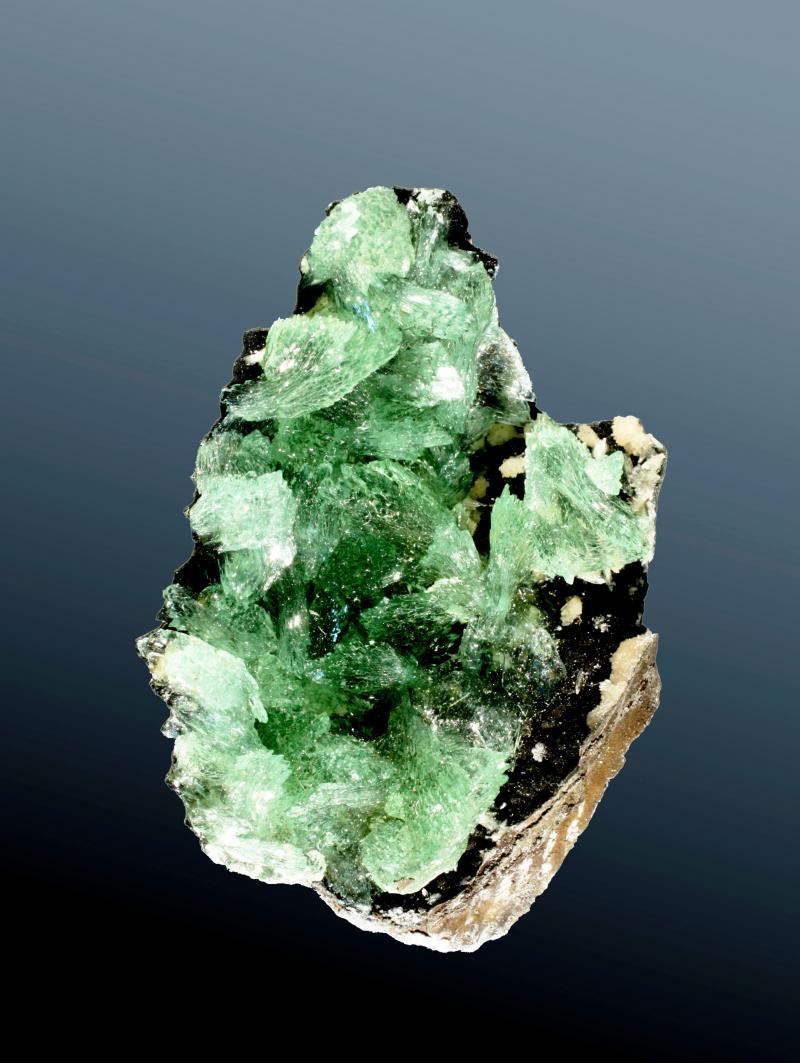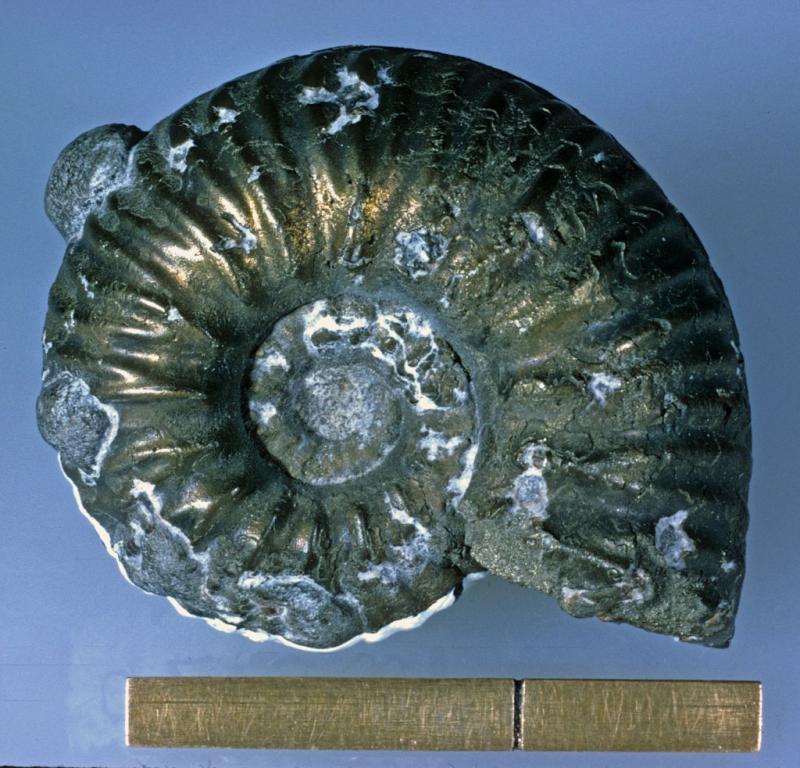| View previous topic :: View next topic |
| Author |
Message |
Carles Millan
Site Admin

Joined: 05 May 2007
Posts: 1538
Location: Catalonia



|
 Posted: May 17, 2013 13:59 Post subject: Re: When can a fossil be also considered a mineral? Posted: May 17, 2013 13:59 Post subject: Re: When can a fossil be also considered a mineral? |
|
|
| Roger Warin wrote: | | Without giving a lesson, I think fossilization is actually a pseudomorphosis whose shell (for example) gives the form. A conventional mineral pseudomorphosis is the gradual transformation of azurite into malachite. The material turns without transport. The resulting crystal of malachite retains the shape of the initial azurite. But malachite is not a single crystal. A fossil is a residue of an organic, a plant or animal skeleton. Silica impregnated wood fibers whose soft material disappears. A shell will fill with sediment, calcite, pyrite, etc… In general, a fossil will be a differentiated rock or a mineral depending on the composition. |
Indeed it's been an excellent lesson, Roger. A splendid explanation we should take good note of.
Thank you!
|
|
| Back to top |
|
 |
Cesar M. Salvan
Site Admin
Joined: 09 Jun 2008
Posts: 127
Location: Alcalá de Henares



|
 Posted: May 17, 2013 14:51 Post subject: Re: When can a fossil be also considered a mineral? Posted: May 17, 2013 14:51 Post subject: Re: When can a fossil be also considered a mineral? |
|
|
A cautionary note:
The use of term pseudomorphosis to define the replacement of a mineral after a biological remain, even if the remains are of inorganic nature (as bones or shells) is a misuse. The substitution of a biomineral or an organic structure by a new mineral (silica after phosphate or after wood's lignin) is a replacement, not a pseudomorphosis. The pseudomorphosis refers to the maintaining of the crystal shape of an euhedral or idiomorph original crystal. I remark, crystal shape. Again (maybe the words of the south europeans are worth less), the sentence "pyrite after ammonite" suggesting a pseudomorphosis is not correct and should not be used in labels.
Although from an etymological view, pseudomorphosis could refer to any replacement that maintain the former shape, from a mineralogical view, the use of pseudomorph is clearly defined and not mixed with fossilization or replacement terms. Replacement is the general term that encompass the other and, in doubt, it should be used.
|
|
| Back to top |
|
 |
Roger Warin

Joined: 23 Jan 2013
Posts: 1246



|
 Posted: May 17, 2013 16:00 Post subject: Re: When can a fossil be also considered a mineral? Posted: May 17, 2013 16:00 Post subject: Re: When can a fossil be also considered a mineral? |
|
|
Hi,
Your point is well taken. But as long ago as I left the academic way, which makes me also to address a literary public by taking some liberties with the specific discipline. So I chose to use the term "pseudomorphosis" according to the Greek signification. Roger Titeux’s emerald has the form of a shell, but it is not. This is obviously a crystallographic impossible because even the helicity of the shell is respected (dextrorotatory or screw right).
Excuse my reply, but I do not think anyone knows the sequence of processes that led to the formation of this beryl, apart from the general context of a hydrothermal type. The "replacement" is certainly not trivial.
Roger.
|
|
| Back to top |
|
 |
Cesar M. Salvan
Site Admin
Joined: 09 Jun 2008
Posts: 127
Location: Alcalá de Henares



|
 Posted: May 17, 2013 16:54 Post subject: Re: When can a fossil be also considered a mineral? Posted: May 17, 2013 16:54 Post subject: Re: When can a fossil be also considered a mineral? |
|
|
Hi Roger,
Indeed, the beryl fossilized gastropods from Gachala are very interesting. I'm not expert in these deposits, but to my eyes are not very surprising taking into account that the hydrothermalism of these deposits is epigenetic and the deposit is associated to marine black shales. The metasomatism of organic rich black shales, with presence of macrofossils, by hydrothermal fluids could explain the replacement of the original material of gastropod by beryl. I think that, in this case, the major mystery is not the "berylized" fossils, that, to my eyes appears as an usual replacement (in this case, beryl instead of a more common silica, after carbonate? or after previously silicified remains, that could explain that the original shape survived the hydrothermalism with only partial dissolution?). More difficult to explain is the origin of a remarkable beryllium anomaly.
As I said I'm not expert in these deposits and this is a mere 'back envelope' hypothesis and I should revise all published references. Anyway, as you said is not trivial, but still I wouldn't define these "emerald snails" as a case of pseudomorphosis. I hope that an expert in the Gachala and related deposits read my brief explanation and can elaborate it.
|
|
| Back to top |
|
 |
Don Lum

Joined: 03 Sep 2012
Posts: 2923
Location: Arkansas



|
 Posted: May 17, 2013 18:58 Post subject: Re: When can a fossil be also considered a mineral? Posted: May 17, 2013 18:58 Post subject: Re: When can a fossil be also considered a mineral? |
|
|
| Carles Millan wrote: | | Don Lum wrote: | | So if the State of Florida recognizes fossilized agate as The State Stone, then maybe it is a stone :-). |
The US Supreme Court unanimously decided long ago (year 1893) that tomatoes were NOT a fruit but a vegetable. |
I agree with the U.S. Supreme Court on that one. I think that tomatoes are vegetables. But I give you the last word. Or did I just get the last word?
Don
_________________
hogwild |
|
| Back to top |
|
 |
Carles Curto

Joined: 14 Sep 2006
Posts: 160
Location: Barcelona



|
 Posted: May 18, 2013 02:01 Post subject: Re: When can a fossil be also considered a mineral? Posted: May 18, 2013 02:01 Post subject: Re: When can a fossil be also considered a mineral? |
|
|
The process of fossilization involves the substitution molecule by molecule of most of the original animal compounds. In this sense, fossilization is, at the same time, a mineralization.
But, must we include fossils in mineral collections? I think the answer is yes and it is not (in another word: it depends!).
Would you include a calcitic ammonite in your collection? Surely no.
But, and this (see the picture)?
It is a silicified (chalcedony) Pleurotomaria sp., from Germany.
| Description: |
Quartz (chalcedony)
Kapellenberg, Sachsen, Germany.
3,5 x 3,9 x 1,6 cm
Botryoidal growths. |
|
| Viewed: |
59682 Time(s) |

|
|
|
| Back to top |
|
 |
Carles Curto

Joined: 14 Sep 2006
Posts: 160
Location: Barcelona



|
 Posted: May 18, 2013 02:10 Post subject: Re: When can a fossil be also considered a mineral? Posted: May 18, 2013 02:10 Post subject: Re: When can a fossil be also considered a mineral? |
|
|
By other hand, fossils are present as a base for finely recrystallized minerals (i.e. some phosphates as apatite, vivianite or anapaite, carbonates as calcite and aragonite, oxides and hydroxides, as goethite, or sulphides as pyrite and marcasite).
See the picture of this anapaite from Crimea (Krim), the base of the crystals is a valve of a fossil bivalve shell, not easaily visible on the photo, but it is complete.
| Description: |
Anapaite
Kerč, Peninsula of Krim (Crimea), Ucrania.
3,4 x 2,2 x 0,8 cm. |
|
| Viewed: |
59737 Time(s) |

|
|
|
| Back to top |
|
 |
Carles Millan
Site Admin

Joined: 05 May 2007
Posts: 1538
Location: Catalonia



|
 Posted: May 18, 2013 03:53 Post subject: Re: When can a fossil be also considered a mineral? Posted: May 18, 2013 03:53 Post subject: Re: When can a fossil be also considered a mineral? |
|
|
| Don Lum wrote: | | Carles Millan wrote: | | Don Lum wrote: | | So if the State of Florida recognizes fossilized agate as The State Stone, then maybe it is a stone :-). |
The US Supreme Court unanimously decided long ago (year 1893) that tomatoes were NOT a fruit but a vegetable. |
I agree with the U.S. Supreme Court on that one. I think that tomatoes are vegetables. But I give you the last word. Or did I just get the last word? |
I'm not going to keep this off topic controversy alive, so here are my last words about it:
If the tomato vegetable is not a fruit, then can you please tell me what the fruit of the tomato plant is? You may want to clear your doubts on Wikipedia rather than on the year 1893 (I believe) flawed US Supreme Court sentence.
|
|
| Back to top |
|
 |
Roger Warin

Joined: 23 Jan 2013
Posts: 1246



|
 Posted: May 18, 2013 04:14 Post subject: Re: When can a fossil be also considered a mineral? Posted: May 18, 2013 04:14 Post subject: Re: When can a fossil be also considered a mineral? |
|
|
Hi Cesar,
Thank you for your very nuanced reply. I think with you it was good to stay rigorous even for the general public. But the scientific popularization is a difficult art.
Roger.
|
|
| Back to top |
|
 |
Carles Curto

Joined: 14 Sep 2006
Posts: 160
Location: Barcelona



|
 Posted: May 18, 2013 13:02 Post subject: Re: When can a fossil be also considered a mineral? Posted: May 18, 2013 13:02 Post subject: Re: When can a fossil be also considered a mineral? |
|
|
| US Supreme Court are not botanists (evidently).
|
|
| Back to top |
|
 |
Don Lum

Joined: 03 Sep 2012
Posts: 2923
Location: Arkansas



|
 Posted: May 19, 2013 00:03 Post subject: Re: When can a fossil be also considered a mineral? Posted: May 19, 2013 00:03 Post subject: Re: When can a fossil be also considered a mineral? |
|
|
"Knowledge is knowing the tomato is a fruit, wisdom is not putting in your fruit salad.”
Miles Kington
_________________
hogwild |
|
| Back to top |
|
 |
Carles Millan
Site Admin

Joined: 05 May 2007
Posts: 1538
Location: Catalonia



|
 Posted: May 19, 2013 15:00 Post subject: Re: When can a fossil be also considered a mineral? Posted: May 19, 2013 15:00 Post subject: Re: When can a fossil be also considered a mineral? |
|
|
| Don Lum wrote: | | "Knowledge is knowing the tomato is a fruit, wisdom is not putting in your fruit salad.” Miles Kington |
I fully agree (exactly the same is valid for avocados, isn't it?).
And going back to the topic, strangely enough Mindat, by way of the admired and respected Rock Currier, admits Pyrite after ammonite as if it were a regular mineral specimen. And it is nothing less than from the collection of the Smithsonian Institute.
Photo copyright © Rock Currier, downloaded from Mindat.org - Creative Commons Attribution Licence - Some Rights Reserved.
| Description: |
Pyrite after ammonite. Middle to late Jurassic. Specimen is from the collection of the Smithsonian Institute, Museum of Natural History #123770 (1973). Scale at bottom of image is an inch with a rule at one cm.
From Le Clapier, Cornus, Aveyron, Midi-Pyrénées, France |
|
| Viewed: |
44788 Time(s) |

|
|
|
| Back to top |
|
 |
Carles Curto

Joined: 14 Sep 2006
Posts: 160
Location: Barcelona



|
 Posted: May 20, 2013 01:12 Post subject: Re: When can a fossil be also considered a mineral? Posted: May 20, 2013 01:12 Post subject: Re: When can a fossil be also considered a mineral? |
|
|
Pyritized fossils (why not opalized fossils, i.e?) were usually admitted in most of the collections in the XIX and XX centuries. Currently, they are not so commonly included.
Some peripheral aspects of the mineralogy, as artificial and synthetic material, faceted and polished minerals, mining lamps and artifacts, old (or modern) photos and other documents, stamps… are freely added to the any collection.
I want especially note this aspect of “freely collecting”. Anybody having his own baggage of knowledge, aesthetic perception, interest, etc., the most important is to enjoy collecting, so, admit some “clearly mineralized” fossils in the collection must be a personal election, not a rule.
|
|
| Back to top |
|
 |
Carles Millan
Site Admin

Joined: 05 May 2007
Posts: 1538
Location: Catalonia



|
 Posted: May 20, 2013 09:02 Post subject: Re: When can a fossil be also considered a mineral? Posted: May 20, 2013 09:02 Post subject: Re: When can a fossil be also considered a mineral? |
|
|
| Carles Curto wrote: | | (...) the most important is to enjoy collecting, so, admid some “clearly mineralized” fossils in the collection must be a personal election, not a rule. |
A very reasonable answer. All collectors are free to assemble their collection the way they like more. No questions asked.
|
|
| Back to top |
|
 |
Singingstone48

Joined: 05 Feb 2009
Posts: 19
Location: Houston, Texas



|
 Posted: Jul 23, 2013 14:26 Post subject: Re: When can a fossil be also considered a mineral? Posted: Jul 23, 2013 14:26 Post subject: Re: When can a fossil be also considered a mineral? |
|
|
Carles,
Here are a couple examples from my own collection. I collected a bryozoan fossil from an outcrop near Kansas City. Bryozoans normally coat other objects on the seafloor. I accidently dropped it, and one corner broke off. When I looked inside I could see the internal structures of a brachiopod which had re-crystallized as calcite rhombs. Sitting in the middle of this hollow space was a 2 cm long white calcite scalenohedron. So this is a case of a fossil on a fossil with a mineral inside. Second, when I was in graduate school in Indiana I collected geodes near Bloomington. Often they were recognizable as crinoids, corals or brachiopods, but they were still geodes with interesting quartz crystals and occasionally calcite or Baryte inside.
_________________
Steve Blyskal
HGMS Houston, TX |
|
| Back to top |
|
 |
|





